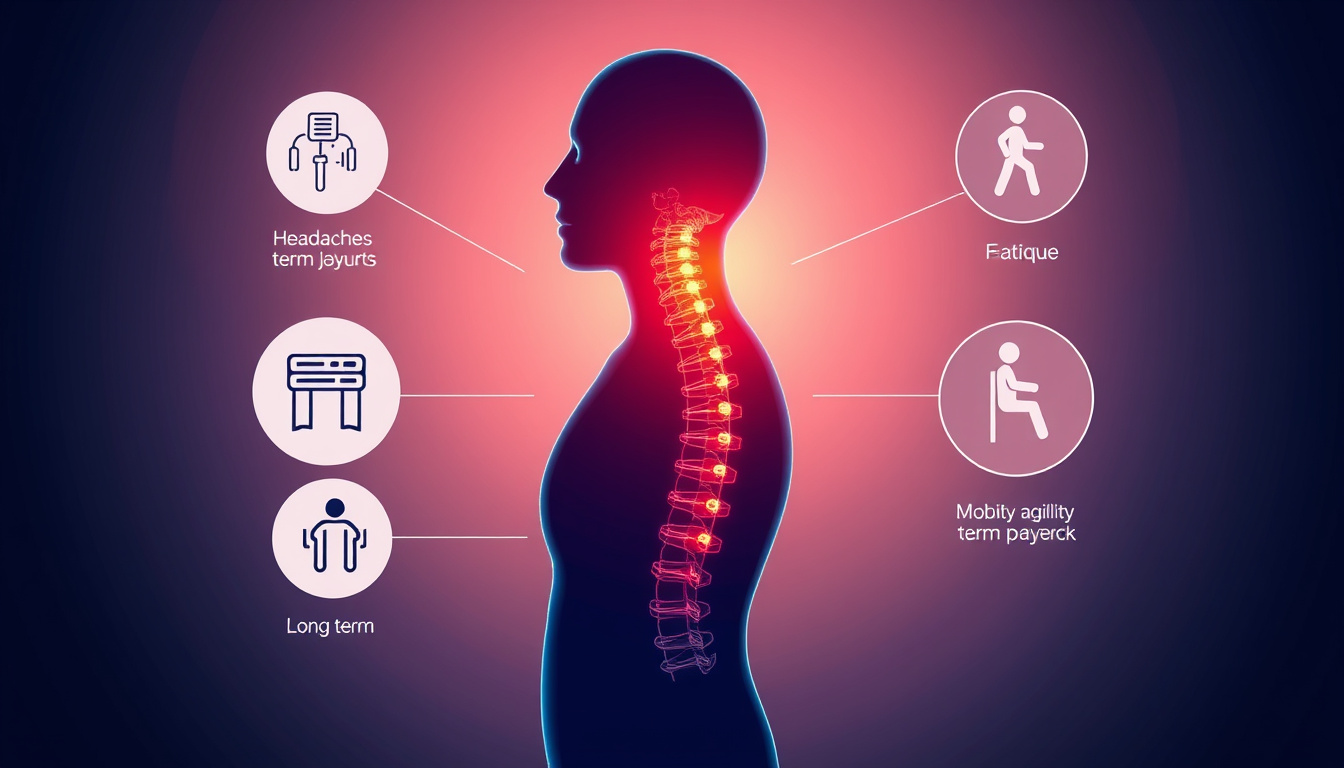
31 Mar Understanding Whiplash: The Hidden Dangers of Car Accidents and How to Protect Yourself
Car accidents can lead to a myriad of injuries, one of the most commonly overlooked being whiplash. This condition, often perceived as a minor inconvenience, can harbor serious long-term health implications if not addressed promptly and effectively. In this article, we will delve into whiplash and car accidents, exploring its causes, symptoms, treatments, and the potential legal considerations for those affected. Understanding whiplash is crucial not only for immediate recovery but also for long-term health benefits. Let’s uncover the hidden dangers of whiplash and how you can protect yourself in the unfortunate event of a car accident.

Key Takeaways
- Whiplash is a neck injury that often occurs from the sudden movement of the head during car accidents.
- Common symptoms of whiplash include neck pain, stiffness, headaches, and dizziness.
- Long-term effects of whiplash can lead to chronic pain and mobility issues if not properly treated.
- Preventative measures like wearing seatbelts and maintaining proper headrest positioning can help reduce whiplash risk in accidents.
- Individuals suffering from whiplash may be entitled to compensation, making legal considerations crucial after an accident.
What is Whiplash and How Does it Occur?
Whiplash is a common injury that often occurs in the aftermath of car accidents, particularly in rear-end collisions. This condition arises when the head is suddenly jerked forward and then backward, causing strain on the neck muscles and ligaments. The rapid back-and-forth movement can lead to various symptoms, including neck pain, stiffness, headaches, and sometimes even dizziness or difficulty in concentrating. Understanding whiplash and car accidents is crucial for victims as it highlights the importance of seeking immediate medical attention following any vehicular incident. Early diagnosis and treatment can mitigate long-term effects, making it an essential aspect of post-accident care.
Common Symptoms of Whiplash After Car Accidents
Whiplash and car accidents often go hand in hand, as this neck injury is prevalent among those involved in vehicle collisions. Common symptoms of whiplash include neck pain and stiffness, headaches, and a reduced range of motion in the neck. Patients may also experience dizziness, fatigue, and pain in the shoulders or upper back. Additionally, some individuals report difficulty concentrating and memory issues, known as whiplash-associated disorders. Understanding these symptoms can help you seek prompt medical attention after a car accident, ensuring you receive the appropriate care for this often-misunderstood injury.
‘The best way to predict your future is to create it.’ – Peter Drucker

Long-term Effects of Whiplash on Health
Whiplash and car accidents often go hand in hand, typically resulting from the sudden jerking motion of the head during collision. While many people associate whiplash with immediate neck pain or discomfort, the long-term effects can be far more debilitating. Research indicates that individuals who suffer from whiplash may experience chronic pain, headaches, and neurological symptoms that persist for months or even years after the initial injury. Additionally, whiplash can lead to decreased range of motion and stiffness in the neck, affecting daily activities and overall quality of life. Recognizing the potential for these long-term health implications emphasizes the importance of seeking early medical intervention following an accident. With the right treatment and rehabilitation strategies in place, individuals can mitigate the long-lasting consequences of whiplash, ultimately leading to a more favorable recovery outcome.
How to Prevent Whiplash in Car Accidents
Whiplash and car accidents are often linked, making prevention an essential aspect of road safety. To minimize your risk of experiencing whiplash, it’s crucial to adopt safe driving habits and maintain your vehicle properly. Firstly, always wear your seatbelt, as this simple act can significantly reduce the severity of injuries during a collision. Additionally, ensure that your headrest is correctly adjusted; it should ideally align with the back of your head to provide optimal support in the event of a sudden stop or impact. Another effective strategy is to stay aware of your surroundings and maintain a safe following distance from the vehicle in front of you. By doing so, you can react promptly to sudden changes in traffic flow, thereby reducing the likelihood of an accident that could lead to whiplash. Lastly, consider defensive driving courses, which can equip you with further skills to help avoid collisions that might result in whiplash and car accidents. By prioritizing these preventive measures, you can significantly enhance your safety on the road.

Effective Treatments for Whiplash Injuries
Whiplash and car accidents are often intertwined, as this neck injury is commonly sustained during rear-end collisions. Effective treatments for whiplash injuries typically involve a combination of medical interventions and rehabilitation therapies. Initial care may include ice therapy and non-steroidal anti-inflammatory drugs (NSAIDs) to reduce pain and swelling. As the acute pain subsides, physical therapy becomes crucial; tailored exercise programs help restore mobility and strength in the affected neck muscles. In some cases, a chiropractor may provide spinal manipulation techniques to alleviate discomfort. Additionally, alternative therapies like acupuncture and massage therapy can enhance recovery by promoting relaxation and increasing blood flow to the injured area. While most whiplash injuries improve with these conservative treatments, some individuals may require more advanced interventions, such as corticosteroid injections or, in rare cases, surgical options. Seeking prompt medical attention following a car accident is essential to prevent chronic pain and ensure a comprehensive recovery.
Legal Considerations: Seeking Compensation for Whiplash
When it comes to whiplash and car accidents, understanding the legal landscape is crucial for those seeking compensation. Whiplash, often resulting from the sudden jerking motion during a collision, can lead to significant medical expenses, lost wages, and long-term pain. To successfully navigate the claims process, it’s essential to gather thorough documentation of your injuries, including medical records and accident reports. Engage with a knowledgeable attorney who specializes in personal injury cases; they can advocate on your behalf and ensure you receive the rightful compensation. Additionally, be aware of the statute of limitations in your state, as this can impact your ability to file a claim. By addressing these legal considerations, you can better position yourself to obtain compensation for the physical, emotional, and financial burdens caused by whiplash and car accidents.

Sorry, the comment form is closed at this time.